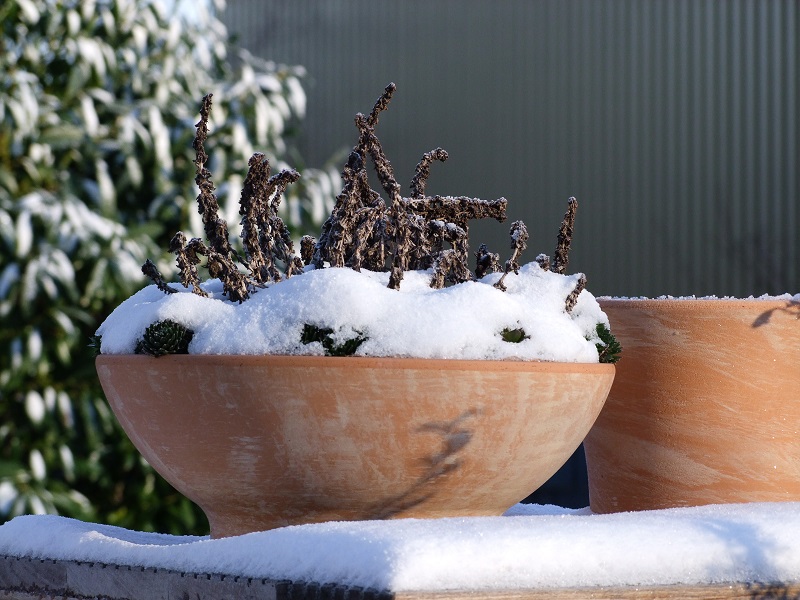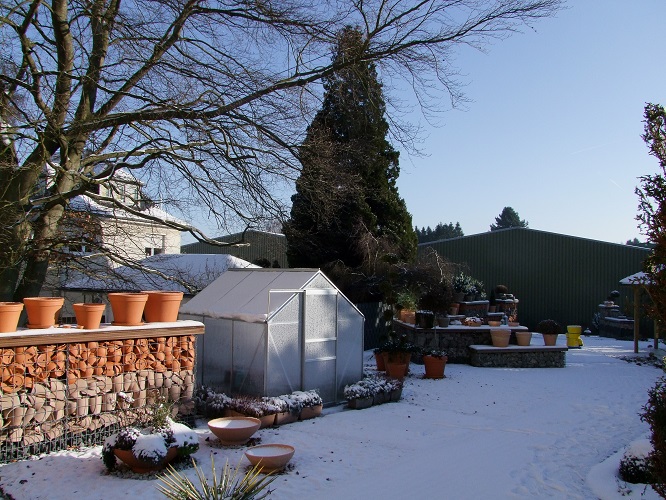Clay pots at sub-freezing temperatuers - frost resistance

Every year in fall even those plants are carried inside which could have wintered outdoors to avoid facing a pile of broken clay pots in the following spring.
For frost to work its destructive way the pots need to hold a certain amount of water. A dry pot cannot be broken by frost. A soaked pot which has more than 90% of its pores filled with water will not allow the freezing water to expand which leads to an enormous crystallization pressure. Once this pressure exceeds the breaking point of the clay pot, it will break. Frequent changes from frost to thaw will impact the life span of a pot.
Pre-existing damages such as minor cracks or defects are often the initial point of destruction. The following instructions will help your clay pot to survive winter unharmed:
1. Make sure any water can drain easily from the pot, so no damned water can ice and disrupt the container.
2. The drainage hole should be free and covered by, for example, a convex shaped clay shard which allows the water to drain.
3. Put the clay pot on clay feet (available as accessories); the pot cannot freeze to the ground and excess water can drain easily.
4. If possible, place the pot in a corner save from rain and draft. This protects the clay from wetting and destructive freezing.

The statement that industrially produced clay pots are not as frost resistant as handmade clay containers is not generally applicable. However, we do recommend to not leave your window and terrace boxes to winter outside. Same applies to glazed saucers. Pots and planter bowls of our production have proven themselves as winter proof in many years of daily use. This is the result of the special material properties, the careful processing and the high aggregation after the ceramic firing. No one can offer a reputable, general guarantee on the frost resistance of clay pots. However, if you follow the above instructions you have made the right choice with SPANG products – even for the winter season.


